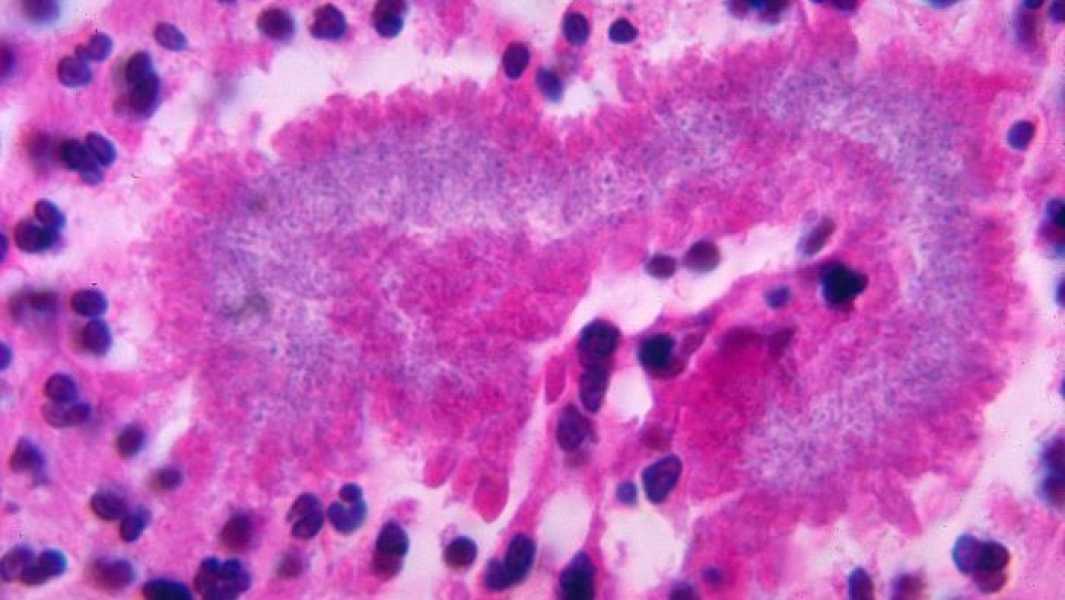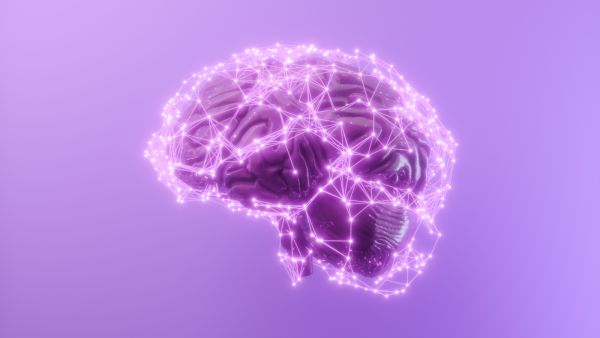
Microscopic image of an inflammatory abscess due to nocardiosis. (Photo credit: CDC/Dr. Lucille Georg via CDC PHIL)
Disease name: Nocardiosis
Affected populations: Nocardiosis is a rare but potentially life-threatening infectious disease caused by bacteria of the genus Nocardia. It is an opportunistic infection, meaning it does not usually affect healthy people, but can infect those with weakened immune systems, such as patients with cancer or HIV/AIDS, and organ transplant recipients taking immunosuppressant drugs.
However, about 20–30% of people with nocardiosis have no known preexisting conditions, indicating that the infection may not only affect people with immune deficiencies. People over 40, especially men, also have an increased risk of developing the disease compared to other demographic groups.
In the United States, there are between 500 and 1,000 new cases of nocardiosis reported each year.
Causes: Nocardia bacteria live in soil, standing water, and decaying plant material. There are about 100 known species of Nocardia, of which 12 can cause human infections.
Infection with Nocardia bacteria can be acquired by inhaling dust containing the organisms or by having cuts or scrapes that come into contact with contaminated soil or water.
Nocardiosis is not known to be transmitted from person to person; infection occurs directly from the environment.
Symptoms: Symptoms of nocardiosis vary depending on which part of the body is infected with Nocardia bacteria.
Most cases of nocardiosis begin with lung infections, in which pus-filled cavities or abscesses form in the lungs. This can cause symptoms such as chest pain, coughing (including blood production), sweating, chills, and general weakness.
Image 1 of 2

(Image credit: Future)

(Image credit: CDC/Dr. Libero Ajello via CDC PHIL)
Skin ulcers on the arm of a patient with nocardiosis.
Nocardia bacteria can travel through the bloodstream and form abscesses in other parts of the body, including the brain, kidneys, and intestines. Brain infections can cause headaches, weakness, confusion, and seizures.
About one-third of all patients infected with nocardiosis develop skin ulcers or sores instead of internal infections.
Sourse: www.livescience.com





